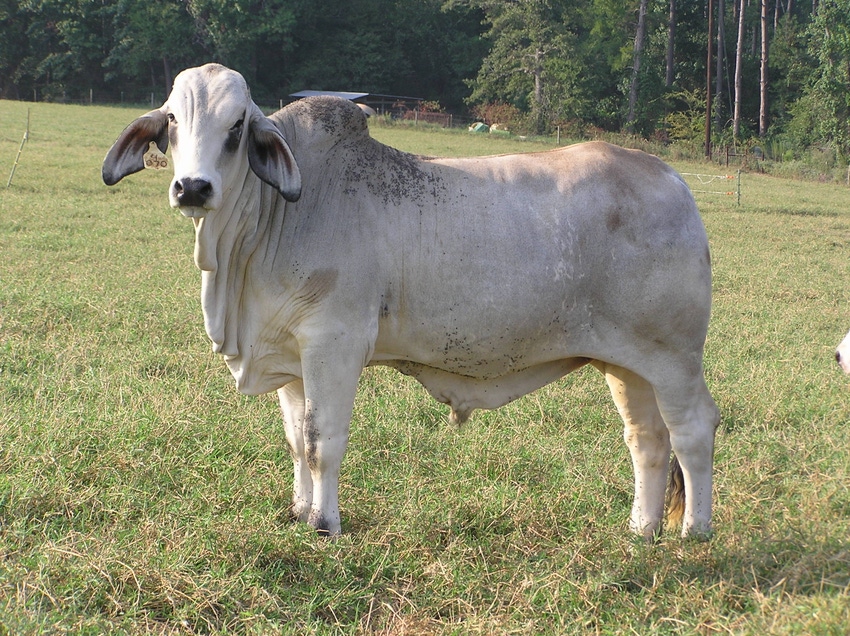Study finds relationship between Brahman steers ADG, meat tenderness
Research illustrates the impact residual feed has on physiological traits of Brahman steers in the Gulf Coast states.
July 26, 2023

The dependence of residual feed intake on growth and tenderness of Brahman cattle, a common breed chosen for crossbreeding cattle along the southern United States, including Texas, was the focus of a cattle feeding study published in Applied Animal Science journal.
The study, "Relationships of residual feed intake and residual average daily gain with carcass traits and growth of Brahman steers," illustrates the impact residual feed has on physiological traits of Brahman steers in the Gulf Coast states, according to researchers.
Residual feed intake is the difference of actual feed intake from expected feed intake of an animal for its size and is used to determine what amount of feed is necessary to maintain body weight and/or weight gain.
Monte Rouquette, Texas A&M AgriLife Research forage physiologist, was lead author and conducted the study at the Texas AgriLife Research and Extension Center in Overton. Other collaborating researchers included Joe Paschal, retired Texas A&M AgriLife Extension Service livestock specialist and currently executive vice president for the American Brahman Breeders Association, College Station; Tanner Machado, animal scientist in the Department of Animal Science and Veterinary Technology at Texas A&M University-Kingsville; Charles Long, resident director, Overton; and David Riley, College of Agriculture and Life Sciences Department of Animal Science, College Station.
"This was truly a team effort of research scientists," Rouquette said.
Results showed a linear relationship between the tenderness of meat to a steer's residual average daily gain. The most efficient steers grow rapidly, provide satisfactory maturation for harvest and typically produce a tender carcass, Rouquette said.
Feed intake, performance outcomes
"The objectives of this study were to measure feed efficiency data for yearling Brahman bulls and to determine the relationship of these efficiency groupings to growth, feedlot performance, carcass traits and tenderness of Brahman steers," Rouquette said.
Rouquette said it was Randel's concept to evaluate Brahman bulls for feed efficiency.
"We asked the question, 'are these bull calves potential sires or steers?' At certain ages, scrotum circumference was measured, semen quality was evaluated as well as temperament," he said.
There was also further intrigue from the results of the study since Brahman cattle are crossbred throughout the southern Gulf Coast.
"The Brahman crossbred cow has proven attributes of reproductive efficiency, longevity, and for adaptation to the vegetation and climatic conditions of the Southwest and Gulf Coast States," Rouquette said.
Results showed there is a linear relationship between the tenderness of meat to a steer's residual average daily gain, he said. The most efficient steers grow rapidly, provide satisfactory maturation for harvest and typically produce a tender carcass.
The results collected from the Warner-Bratzler Shear Force measurement method indicated, "all steaks of Brahman steers were considered 'tender' and not 'tough' by these measurements," Rouquette said.
Results from this study introduced efficient ways to conduct and maintain Brahman cattle from birth to steak.
"From breeder, producer to consumer, implement management strategies for the most efficient production on pastures prior to cattle entering the feedlot," he said. "This study reinvents the accord of economic, environmental, and production growth for Brahman steers."
You May Also Like


.png?width=300&auto=webp&quality=80&disable=upscale)
